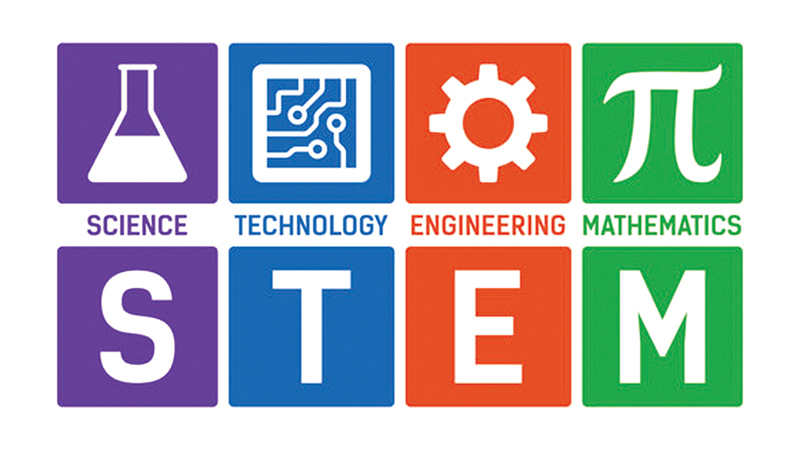STEM education—an interdisciplinary approach to teaching science, technology, engineering, and mathematics—has become essential today. Far beyond the confines of the classroom, it equips learners with critical skills, fosters innovation, and prepares individuals to tackle real-world challenges.
Schools serve as the starting point for cultivating curiosity, critical thinking, and problem-solving skills. Integrating STEM into early education lays the foundation for future learning and career opportunities.
Children are natural explorers, constantly seeking answers to how the world works. STEM education channels this curiosity into structured learning experiences. A science experiment, a simple coding activity, or an engineering project can ignite a lifelong passion for discovery. For example, introducing robotics in elementary school allows students to see the tangible outcomes of their ideas, nurturing creativity and confidence.
STEM education emphasises inquiry-based learning, encouraging students to ask questions, analyze information, and evaluate solutions. These critical thinking skills are invaluable not only in academics but also in everyday life. A student solving a math problem learns to approach challenges methodically, a skill transferable to personal decision-making and professional problem-solving.
In today’s job market, STEM-related fields are among the fastest-growing sectors. Exposing children to these disciplines early prepares them for high-demand careers. Coding, for instance, is no longer a niche skill—it’s becoming a fundamental literacy. Schools that prioritise STEM education ensure that students graduate not just as learners but as future-ready individuals equipped to contribute meaningfully to society.
Promoting gender equity
Historically, STEM fields have been male-dominated, with women and girls often underrepresented. Introducing STEM education in schools helps bridge this gap by encouraging young girls to pursue their interests in science and technology. Programs that highlight female role models in STEM inspire girls to envision themselves in these roles, breaking stereotypes and fostering equality.
While STEM is often associated with school-age learners, its importance for adults is equally critical. In an age where technological advancements continuously reshape industries, lifelong learning in STEM disciplines ensures adults remain competitive and adaptable.
Upskilling for a changing job market
Automation, artificial intelligence, and digital transformation are revolutionising the workplace. Jobs that once required manual labor are now automated, while demand for skills in data analysis, programming, and engineering continues to rise. Adults who invest in STEM education—whether through formal courses or self-directed learning—position themselves as indispensable assets in the workforce.
For instance, professionals in marketing or finance can gain a competitive edge by learning data analytics or artificial intelligence tools, enabling them to interpret trends and make informed decisions. Similarly, individuals in manufacturing can benefit from understanding robotics and automation technologies.
Fostering problem-solving and adaptability
STEM education equips adults with a problem-solving mindset essential in dynamic environments. Whether troubleshooting a software glitch, designing a sustainable product, or optimising processes, STEM knowledge helps individuals approach challenges with confidence. This adaptability is particularly valuable in entrepreneurial ventures, where innovation is key to success.
When adults acquire STEM skills, they not only transform their own lives but also contribute to their communities. Teachers with strong STEM backgrounds inspire students more effectively, parents who understand STEM concepts can better support their children’s learning, and professionals can apply their expertise to address local issues, such as improving infrastructure or enhancing public health initiatives.
Beyond individual benefits, STEM education has a far-reaching impact on society. It drives economic growth, addresses global challenges, and fosters a culture of innovation.
Countries that prioritise STEM education tend to excel in innovation and economic development. By producing a workforce skilled in technology and engineering, nations can attract investment, create jobs, and remain competitive in a global market. Silicon Valley’s success, for example, is rooted in a robust foundation of STEM expertise.
The world faces complex challenges, from climate change to public health crises. Solutions to these issues often require interdisciplinary approaches grounded in STEM. Renewable energy technologies, medical advancements, and sustainable agriculture are just a few areas where STEM plays a pivotal role. By equipping individuals with STEM knowledge, we empower them to contribute to solutions that benefit humanity as a whole.
In a rapidly changing world, the ability to learn and adapt is more important than ever. STEM education instills a mindset of curiosity and continuous improvement. Whether it’s a child building a model rocket or an adult learning to code, STEM fosters a love for discovery that transcends age.
While the benefits of STEM education are clear, access remains a challenge for many. Schools in underprivileged areas often lack resources, trained teachers, and modern infrastructure, limiting opportunities for students. Similarly, adults from low-income backgrounds may struggle to access affordable STEM training programs.
Governments, private organisations, and educational institutions must collaborate to provide funding, resources, and mentorship programs. Community-based initiatives, such as STEM clubs and online learning platforms, can also bridge gaps, ensuring that STEM education reaches learners of all ages and backgrounds.
STEM education is not merely an academic pursuit; it’s a keystone of personal growth, societal progress, and global innovation. For children, it builds a foundation of curiosity, critical thinking, and future-readiness. For us, it offers pathways to career advancement, problem-solving, and community empowerment.
At its core, STEM education cultivates a mindset that values learning, adaptability, and innovation—traits that are essential in shaping a better future. Investing in STEM education for all ages is not just a necessity; it’s an opportunity to unlock human potential and address the challenges of tomorrow. By embracing STEM, we prepare individuals and societies to thrive in a world defined by change and possibility.




